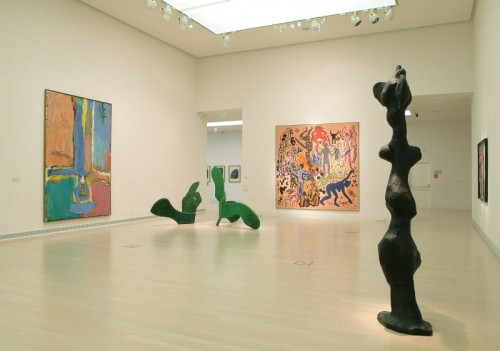Richard Estes is one of the key figures of Photo-realism; although he does not identify with the movement, rather considers himself a painter in the "traditional sense". He developed his unique method in the 1950s, working as a graphic designer: his works are based on photographs, but are not confined to a mimetic view. The scene is primarily New York, but his paintings lack the human figure. The artist examines the origins of artificial illusions created by optical effects and the urban environment. In his work, the contrasting, reflective urban surfaces, the shop windows, the car and the bus windows form an artificial labyrinth. Rappaport Pharmacy is a typical example of Estes' artistic approach. In the American street littered with graffiti and a Pepsi poster, we can see houses, passing cars and traffic lights to the left, while it takes a closer look to notice the title tag of the picture, Rappaport Pharmacy, reflected in the window of the restaurant opposite to the viewer. In Este's paintings, the world appears to be a quotation of reality, distorted and disintegrated, as a reflection of reflections.



